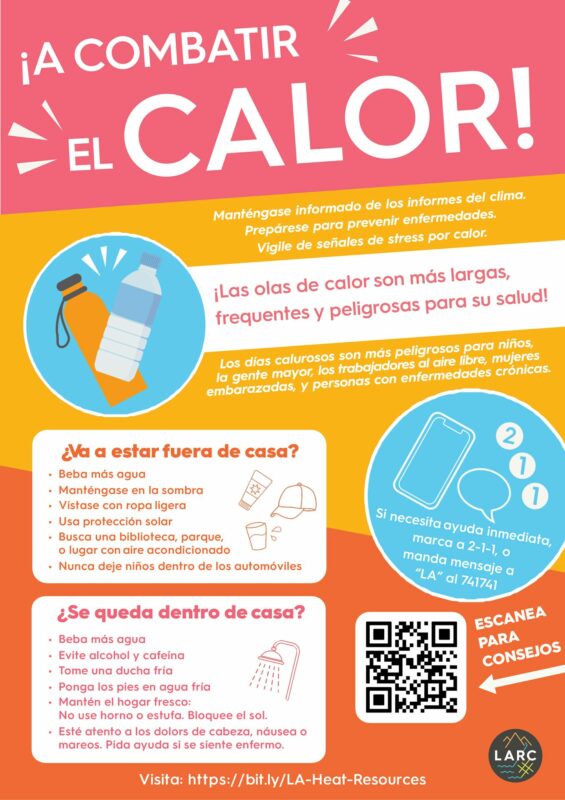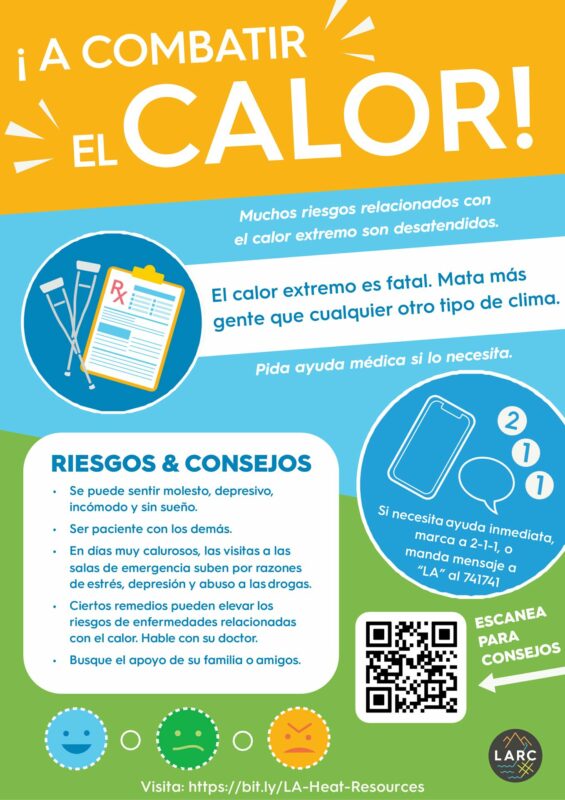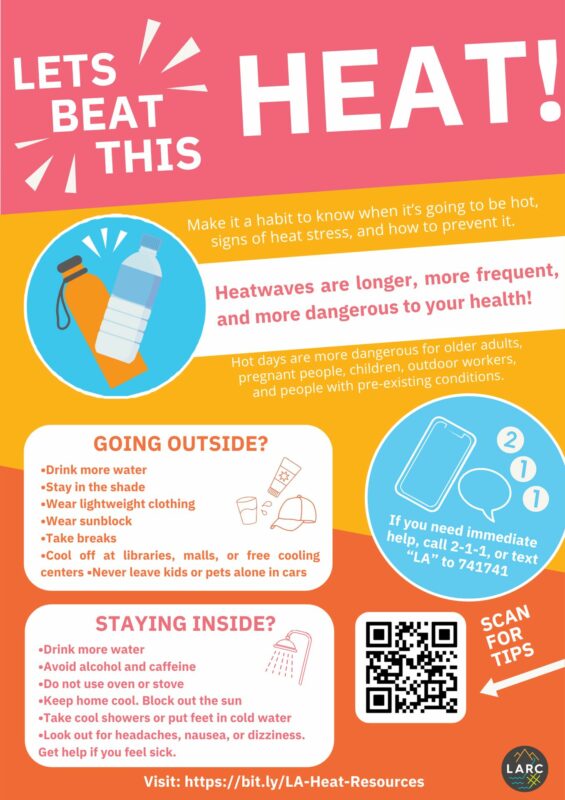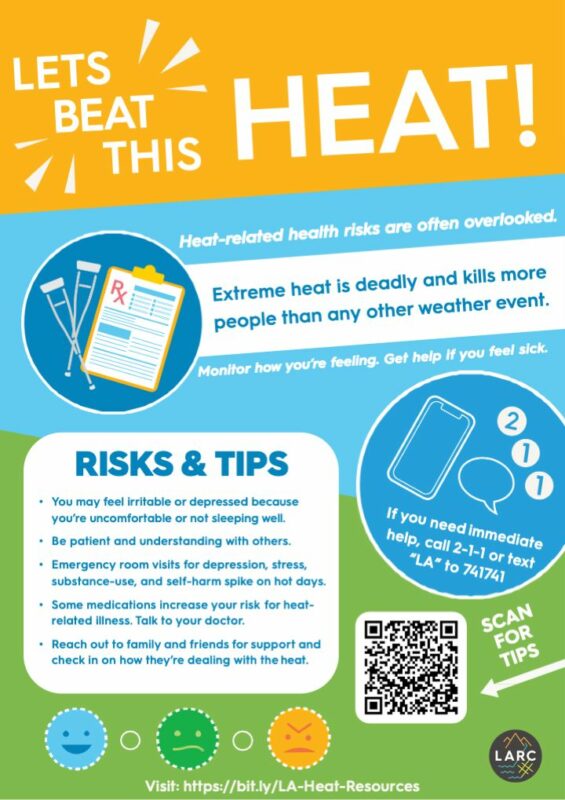
UCLA to lead project to help L.A. County cope with extreme heat
UCLA IoES has secured a $3 million grant to tackle extreme heat in Los Angeles, collaborating with over 75 public health experts, tribal leaders and local government.
Los Angeles County is getting hotter. By 2045, the number of annual heat waves in Los Angeles County is likely to increase tenfold. Rising temperatures mean rising risks for everyone, especially the most heat-impacted groups like older adults, young children and people living and working without air conditioning.
The UCLA Institute of the Environment and Sustainability (IoES) has been awarded a $3 million grant to develop a comprehensive outreach program called Los Angeles Regional Collaborative: Heat Education, Ambassadors, and Training. Funded by the Regional Resilience Grant Program implemented by the Governor’s Office of Planning and Research, UCLA will lead a campaign over the next two summers to help improve public understanding about and response to the risks of extreme heat.
The effort will be collaboratively designed and implemented by the Los Angeles Regional Collaborative, a network of local governments, agencies and organizations housed at IoES; the Fernandeño Tataviam Band of Mission Indians; the nonprofit organization Rising Communities; and the Los Angeles County Department of Public Health.
“This project builds on two summers of work with more than 75 partners throughout L.A. County,” said Erin Coutts, director of the collaborative. “Together we will share actions people can take to prevent serious illness — including simple things like drinking water, seeking shade, resting and checking on others.”
The importance of extreme heat messaging
Extreme heat leads to more than 1,300 deaths per year in the United States, according to the Environmental Protection Agency. In California, a single 10-day heat wave in September 2022 led to 395 more deaths than the California Department of Public Health would have otherwise expected.
With global warming, Los Angeles County experiences record-high temperatures almost every year. A 2020 heat wave set records in Woodland Hills (121 degrees Fahrenheit), Van Nuys (118) and Pasadena (115).
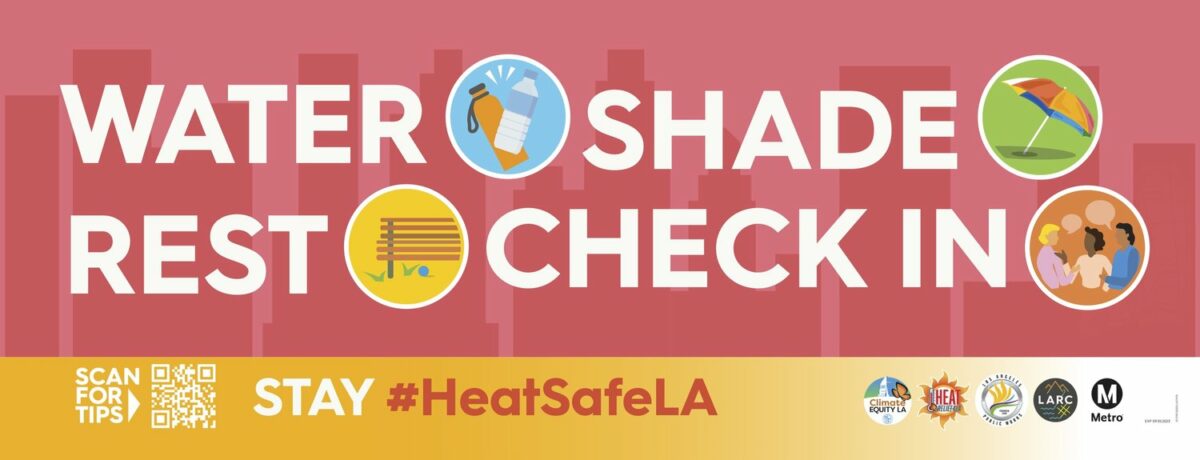
“Heat is the deadliest type of weather event in the United States and its effects are increasingly felt across all of Los Angeles County,” County Public Health Director Barbara Ferrer said. “Through this grant, Public Health aims to raise awareness about heat-related illnesses and provide education through Community Public Health Teams outreach, focusing on communities at higher risk. Prevention is the best defense in addressing the health risks we face during periods of extreme heat and collaboration with community partners is vital.”
The LARC-HEAT campaign
The campaign features social media elements, physical flyers, bus advertisements and heat ambassadors — community members and community health workers who will spread the messages and provide feedback to improve the program in future years. The information and actions the campaign recommends were crafted using UCLA research and guidance from health care practitioners and community experts, including local tribes.
“As stewards of our ancestral lands, we recognize the urgent need to confront rising temperatures and extreme heat in L.A. County,” said Rudy Ortega, Jr., president of the Fernandeño Tataviam Band of Mission Indians. “This project embodies our commitment to environmental stewardship and community resilience, ensuring a sustainable future for all.”
The campaign offers an online toolkit with printable flyers, social media graphics and information. It gives advice on the health risks of extreme heat, how to recognize the symptoms of heat-related illnesses, how to stay cool on commutes, what to do if you lack air conditioning at home and lists places to escape the heat such as libraries, community centers, museums and shopping malls.
Some of the tips and advice are aimed at a public audience, but the campaign also contains advice specific to high-risk populations: older adults, children, people with disabilities or preexisting conditions, pregnant people, outdoor workers and the unhoused.
“We keep trying to reduce emissions to limit climate change, but it is already happening,” Coutts said. “Becoming better prepared for heat events is one of the fastest ways to adapt.”
